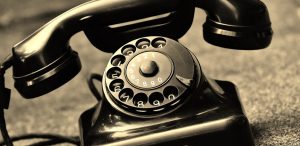Creating a unique and visually appealing logo is crucial for any freelancer looking to create brand recognition and increase their client base. A well-designed logo will not only be memorable but will also convey the freelancer’s expertise and professionalism. In this article, we will discuss the steps to take when creating a standout logo as a freelancer.
H1: Research and Inspiration
Before starting the logo design process, it’s essential to do some research and gain inspiration. This can be done by researching other logos within your industry, analyzing competitors and identifying trends. Inspiration can also come from a variety of sources, including nature, art, and popular culture. It’s essential to ensure that the inspiration is unique and original to avoid plagiarism and copyright infringement.
H2: Determine Your Brand Identity
Before designing a logo, it’s essential to determine your brand identity. This involves considering your target audience, values, and niche. The logo should represent your brand in a way that resonates with your target audience and sets you apart from your competitors. The brand identity should also be consistent across all marketing materials, including the website and social media platforms.
H2: Choose the Right Colors and Fonts
Colors and fonts play a crucial role in creating a successful logo. It’s essential to choose colors that reflect the brand’s personality and target audience. For example, blue is often associated with trust, while red is associated with excitement and passion. It’s also important to choose fonts that are easy to read and don’t distract from the logo’s design.
H2: Create Multiple Sketches and Mockups
Once you have your research, brand identity, colors, and fonts in place, it’s time to start creating sketches and mockups. It’s recommended to create a variety of designs and variations to ensure that you have a range of options to choose from. These designs can be hand-drawn or created using graphic design software such as Adobe Illustrator or Sketch.
H3: Refine and Simplify
After creating multiple sketches, it’s essential to refine and simplify the designs. Choose the most promising design and tweak it until it fulfills the brand’s identity, values, and target audience. It’s essential to ensure that the logo is easily recognizable, even in small sizes. Simplicity is key to creating a memorable and effective logo that will stand the test of time.
H3: Get Feedback
Once you have refined the design, it’s essential to get feedback from others. Share the logo designs with friends, family, and colleagues and ask for honest feedback. It’s also recommended to conduct surveys to get feedback from potential clients or your target audience. This feedback can help identify areas for improvement and ensure that the logo resonates with your target audience.
H3: Finalize and Implement
After incorporating feedback and making necessary changes, it’s time to finalize the logo design. Ensure that the design is saved in multiple file formats for various potential uses, including web and print. It’s recommended to choose vector graphics to ensure that the logo remains scalable without losing quality. Finally, implement the logo across all marketing materials, including business cards, social media profiles, and websites.
Conclusion
Creating a standout logo is an essential part of creating a freelance brand. Take the time to research and gain inspiration and determine your brand identity. Choose the right colors and fonts and create multiple sketches and mockups. Refine and simplify the design and get feedback before finalizing and implementing the logo design.
FAQs:
Q1: How long does it take to create a logo?
Ans: It depends on the complexity of the design and the number of revisions needed. On average, creating a logo can take anywhere from a few days to a few weeks.
Q2: How much should I spend on logo design?
Ans: It depends on the designer’s expertise and experience. On average, a professional logo design can cost anywhere from $500 to $5000.
Q3: What file formats should I save my logo in?
Ans: It’s recommended to have the logo saved in various file formats, including PNG, JPG, and vector graphics such as SVG or AI.
Q4: Can I create my logo using free online tools?
Ans: While it’s possible to create a logo using free online tools, it’s recommended to hire a professional graphic designer to ensure that the logo design is high-quality and unique.
Q5: How often should I update my logo?
Ans: It depends on the brand’s needs and changes. Generally, logos should be updated every few years to ensure that they remain relevant and engaging to the target audience.






